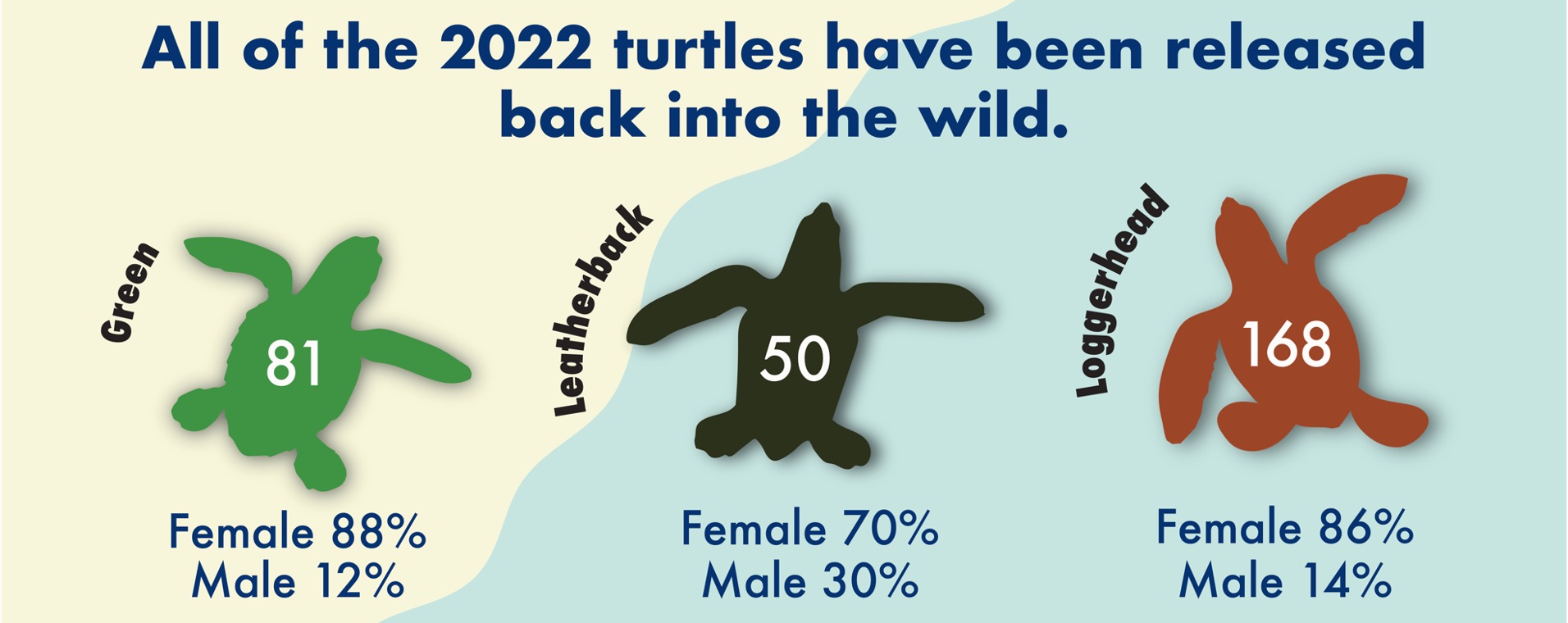
Author: Miguel Serrato
Date:
March 25, 2023
The 2022 turtle season for the FAU Marine Lab came to a close on March 21st as the last of our turtles were released into the Gulf Stream. Since May 2022, a total of 299 turtles –– all three species that hatch from Floridian nests (loggerhead, green, and leatherback) were studied in our lab. Below we highlight some of the questions these turtles were helping us answer this year.
How many males and females are produced on our beaches?
Sex in sea turtles is determined by the temperature of their nest, not by X and Y chromosomes like in humans and other mammals. You can remember: “Hot chicks, cool dudes!” To track naturally occurring sex ratios, every year our lab brings in a subset of hatchlings from our study nests to determine the ratio of males and females produced on our beaches. Environmental conditions change across the early, middle, and late part of nesting season (March-October), years vary too, and therefore, so do hatchling ratios! As has been the trend since the beginning of our sex ratio study, female turtles far outnumbered males on our South Florida beaches. Many years we do not find a single male hatching from our study nests, so we are excited to report that 12% of our green turtles, 14% of our loggerheads, and 30% of our leatherbacks were males this year! These findings add to almost 20 years of data collected by Dr. Jeanette Wyneken and the FAU Marine Lab. This long-term data set helps us answer key questions like: Will our beaches eventually be too hot to produce any males? How many years of all female production are too much? Can, or should, we do anything to change these percentages through management techniques?
Where do little turtles go after leaving the beach?
In 2022, we partnered with Upwell to satellite tag and release 24 turtles after their brief stay with us at the FAU Marine Lab. By tracking these turtles for as long as 10+ weeks, we are beginning to answer this question that has baffled researchers for some time. Archie Carr, the “father of sea turtle research and conservation in the US and Caribbean,” first coined the term the ‘lost years’ to describe this mysterious life stage after hatchlings left the beach and before they returned to nearshore environments as much larger turtles. By affixing tiny satellite tracking tags to tiny turtles, we are starting to unravel the mysteries of where these young turtles go and look forward to continuing this project in 2023 to help us understand variations in their routes.
As is often the case in science, there are always more questions than answers! Our findings will increase the understanding of the sea turtles that call our Florida beaches and waters home. The 2023 season is at our doorstep, and we can’t wait to get started again!
Look out for next month’s newsletter where we will feature some of our graduate student research!
